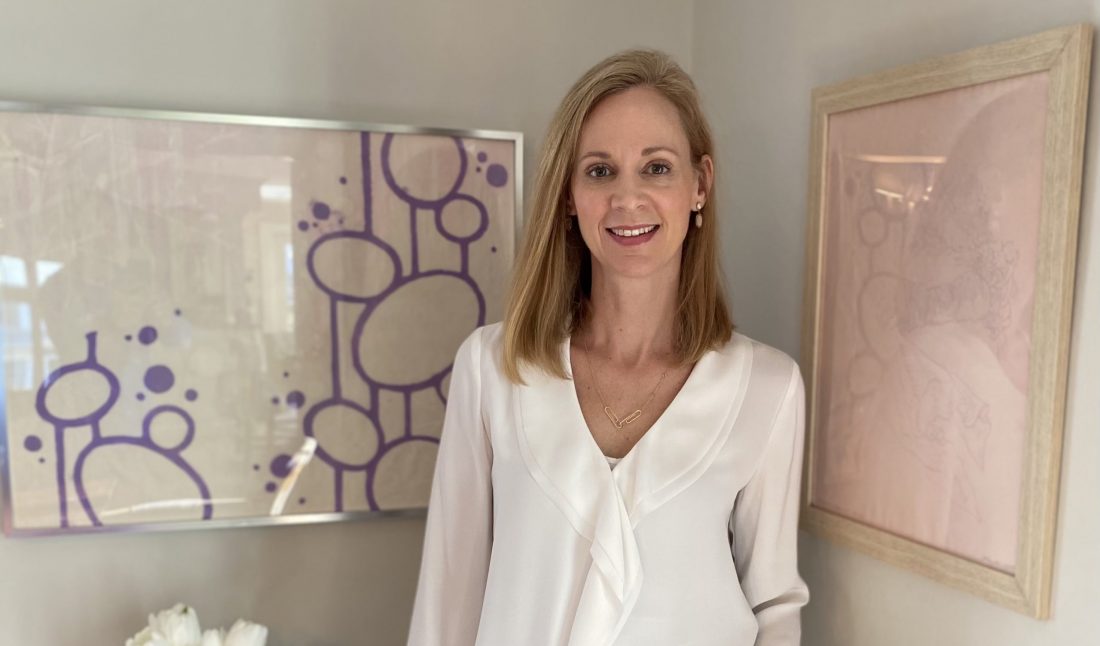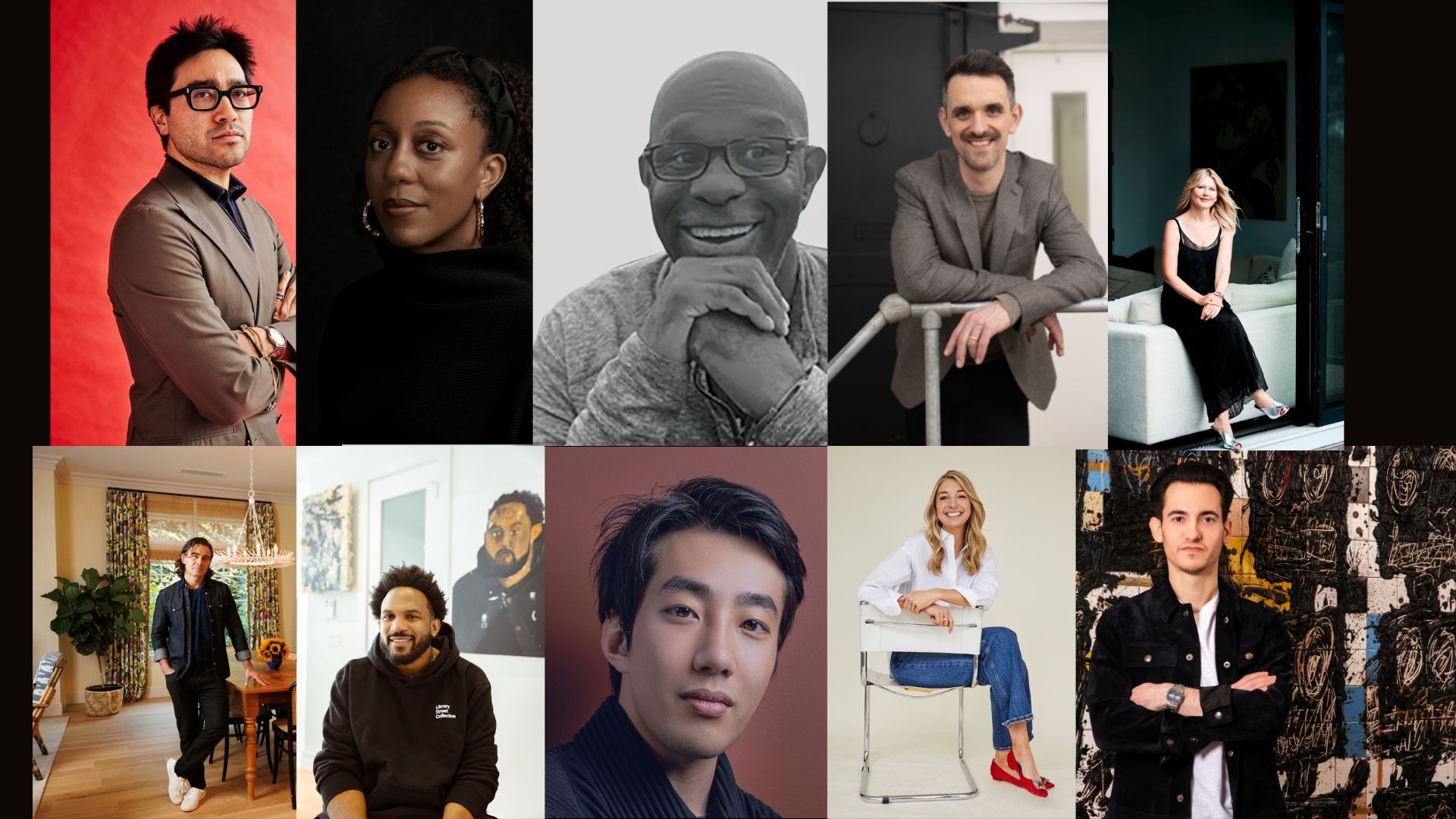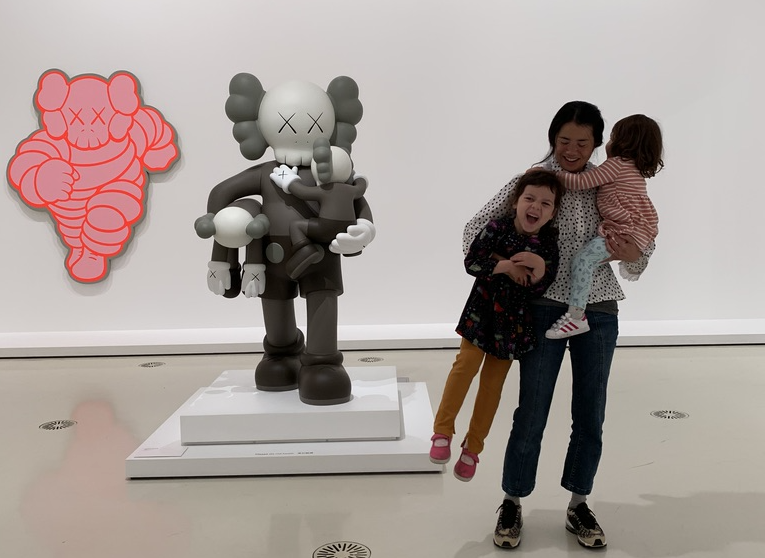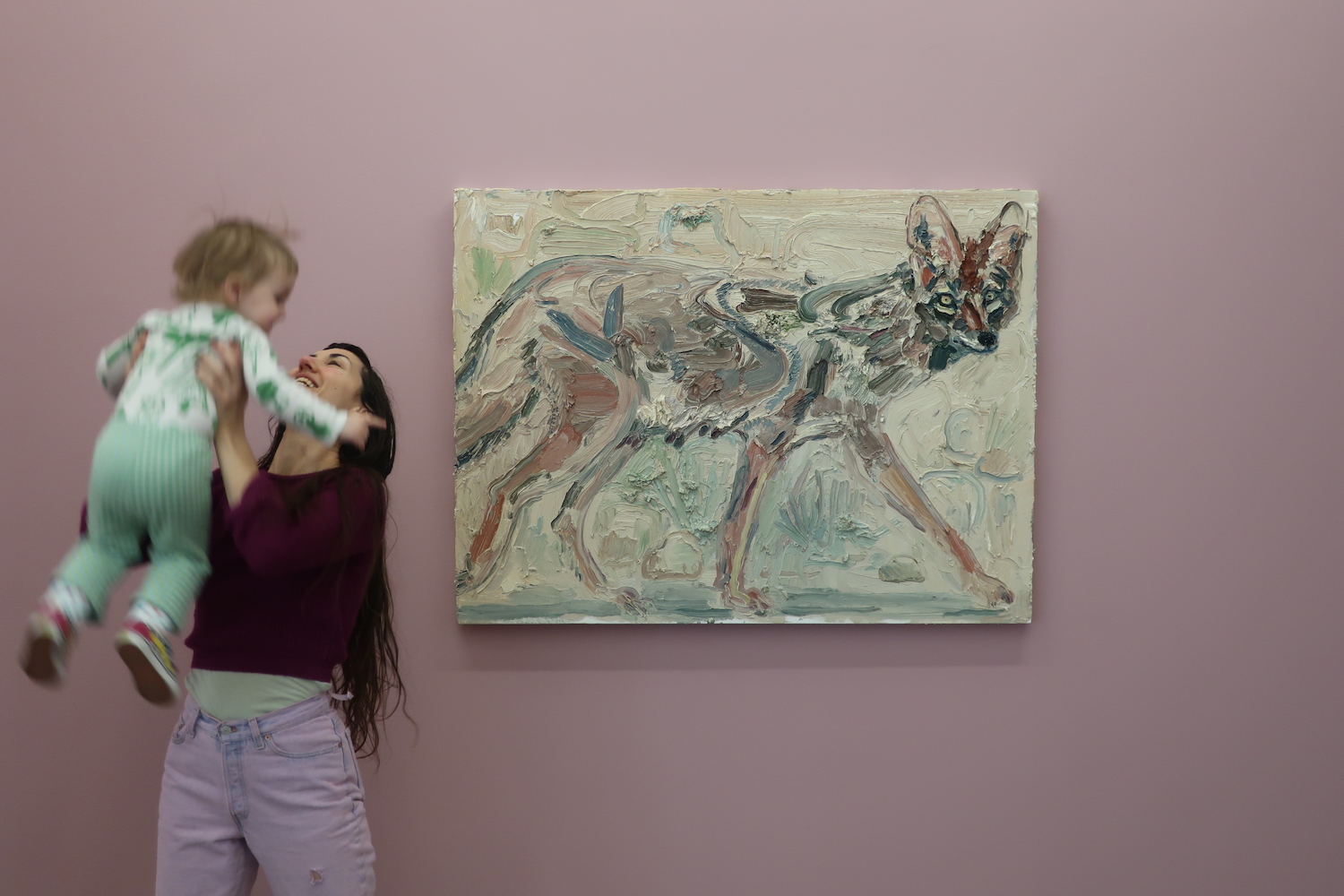Throughout March, timed to Women’s History Month, Artsy presented a series of curated group shows, “First Look” collections, and a variety of digital content showcasing female-identifying artists. Helping with those efforts and the company’s mission for a more inclusive art world was Dustyn Kim, Artsy’s Chief Revenue Office.
As a mother of two, the past year has been a challenging one for Kim, with the entire family working, schooling, and living from home. But she also thinks of it as one of their best years yet, with so much time together—even between Zooms. Prior to her time at Artsy, where she now oversees development and partnerships within their Marketplace, Kim held leadership positions at LexisNexis and Deloitte Consulting.
Becoming a mother helped Kim embrace the chaos and expect the unexpected. For our latest “Art Mamas” conversation, she shared with Whitewall how having children shifted her perspective around career, art, and prioritizing her own happiness.
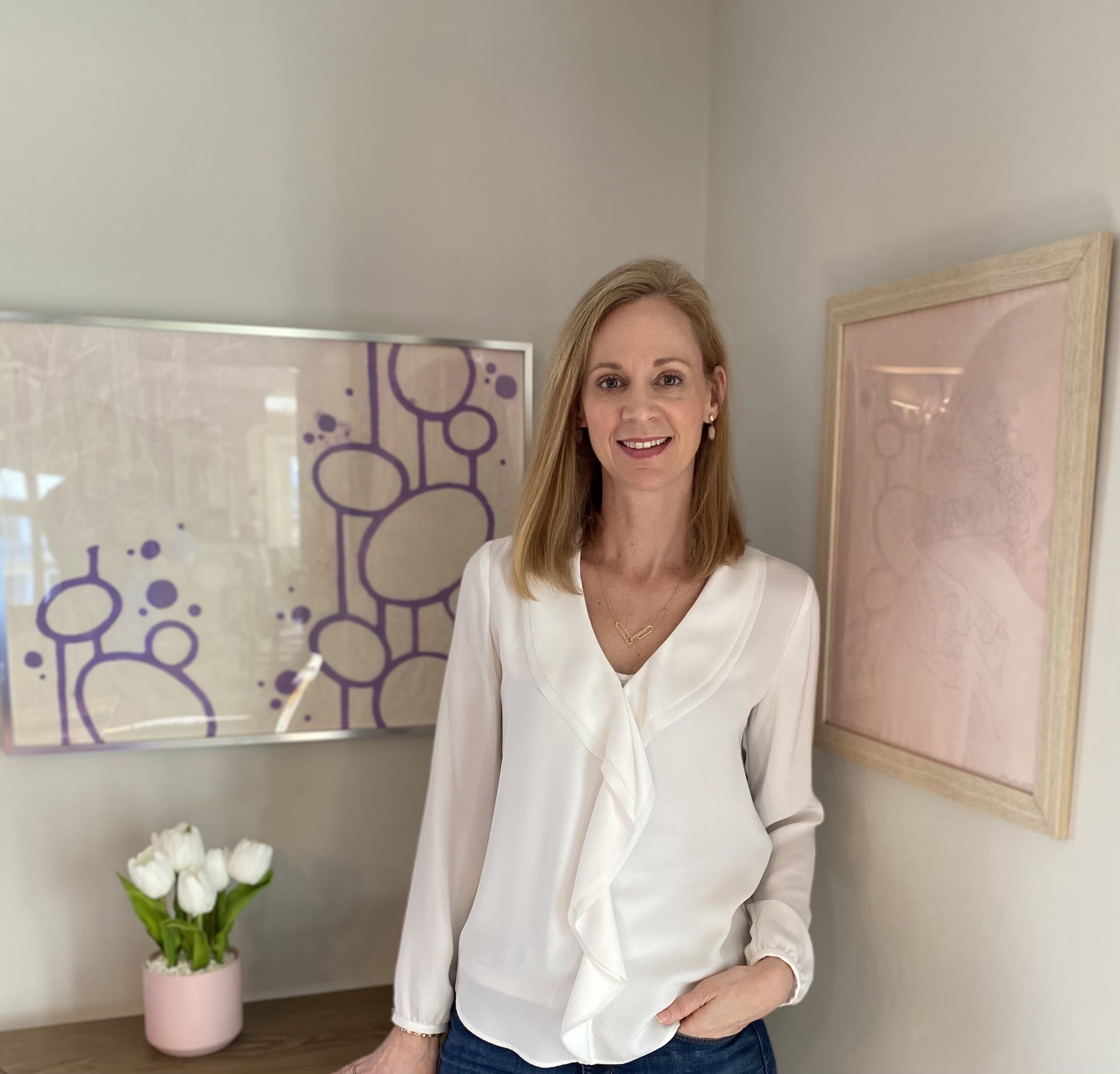 Courtesy of Dustyn Kim.
Courtesy of Dustyn Kim.
WHITEWALL: When did you become a mom?
DUSTYN KIM: I had my first child when I was 34. He arrived after years of trying, making it an even more powerful and magical moment in my life. I’ll never forget holding him for the first time. He was crying when the doctor handed him to me and as I pulled him close, I whispered, “It’s so nice to finally meet you.” He immediately stopped crying and slowly opened his eyes. We sat there looking at each other for the next few minutes and it was like we’d known each other for lifetimes. It was one of the most peaceful and joyous moments of my life.
WW: Were you able to take any leave?
DK: I was fortunate to work for an amazing woman at the time, who also happened to be pregnant! She was a few months ahead of me and was having her second child. She helped me navigate through pregnancy, and through all the mental, emotional and logistical preparation needed to be a working mother. She insisted that I take an extra few weeks on top of the 12-week standard maternity leave and reminded me to soak in every moment. I am so grateful to have had her in my life at that point in time.
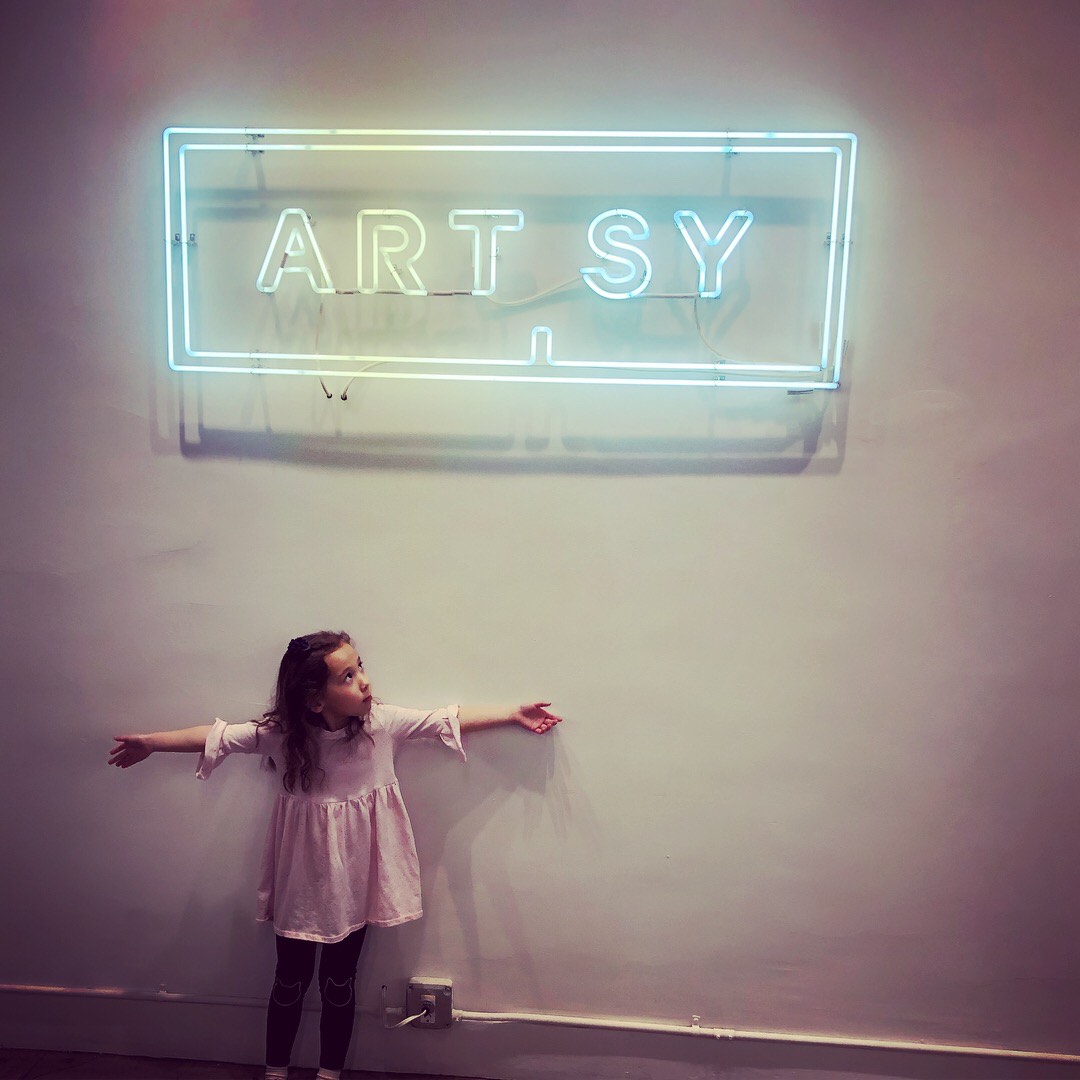 Courtesy of Dustyn Kim.
Courtesy of Dustyn Kim.
WW: How was your transition back?
DK: Given the role model and manager I was fortunate enough to be working with, my transition back was smooth. I didn’t know what to expect. I wondered if I’d even be able to make it through the day or if I’d miss my son too much. I was surprised to find that I actually enjoyed work more after my return. I always appreciated the intellectual aspect of it, but I had a newfound appreciation for the social aspect of work now as well.
After I had my daughter a few years later, I was in a newer and bigger role. I rushed back into work, wanting to prove that I wouldn’t miss a beat. I didn’t fully disconnect during maternity leave and I ended up exhausted and anxious. Now, I advise every woman I can to respect maternity leave and to ease yourself back into work. Careers are long and those precious early months with your child are too important to sacrifice! Additionally, you need that time to not only bond with your child but to care for yourself.
WW: What has surprised you most about motherhood?
DK: I continue to be surprised by how little control I have! Before having kids, I had everything sorted. I was in total control—professionally and personally. Even in situations where I might not be in control, I generally knew what to anticipate and I could prepare… a dinner with friends, for example, where I knew which topics to avoid and could advise my husband accordingly. Once you have kids, all of that goes out the window. Plans are always changing. In fact, I just had to cancel a long-planned meeting with my entire team at Artsy after my son fractured his tooth. Reactions are never what you think—my daughter is painfully shy but often lets her guard down with people I personally find intimidating. Kids are just totally and fantastically unpredictable. It’s led me to embrace chaos and expect the unexpected.
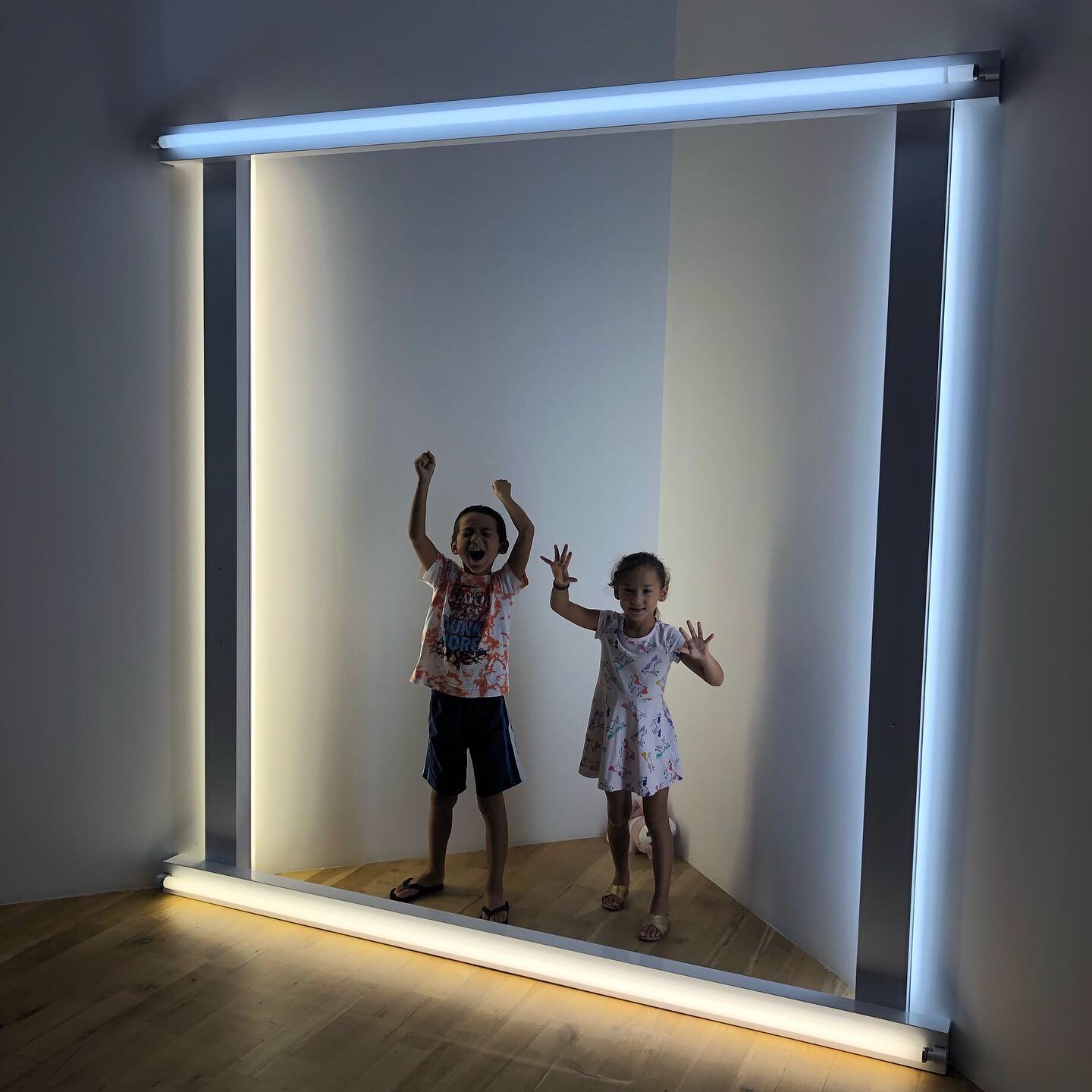 Courtesy of Dustyn Kim.
Courtesy of Dustyn Kim.
WW: How do you interact with your community of mothers?
DK: A lot of my interactions are centered around the kids: school events, sports events, play dates, etc. We also do moms’ night out to enjoy some time to ourselves. I had moments earlier on in motherhood where I felt really lonely, especially after we moved out of NYC to the suburbs, where not as many women were working full time like me. It took some time, but eventually I met many wonderful women in our community that have come to be great friends. We all know how hard it is to juggle motherhood on top of all our other responsibilities and are always there for each other and our kids.
WW: Did becoming a mother, change how you viewed your professional role?
DK: Absolutely. Having kids made me reevaluate my career and ultimately led me to Artsy. As a mother, I questioned whether or not my role was worth being away from the kids 10-12 hours a day, putting so much of their development into the hands of someone else. Furthermore, I was no longer motivated by just money or recognition. Instead, I wanted to focus on something that I truly loved, and I wanted my children to see me having a positive impact on the world. Joining Artsy was the perfect opportunity. I have always loved art (my mother is an artist) and am so thrilled to be part of Artsy’s mission to create a world where more artists can make a living from their art.
 Courtesy of Dustyn Kim.
Courtesy of Dustyn Kim.
WW: How do you experience art with your children?
DK: Fortunately, art is a part of our daily lives. As I mentioned, my mother is an artist. We visit her studio and she’s always coming up with fun projects for the kids to do. During quarantine, she ran daily virtual art classes for us. My mother-in-law is also an artist, so our home is filled with paintings and photographs from the kids’ grandmothers, alongside other female artists I’ve collected over the years. We often talk about the works in our house and have added pieces from the kids throughout the house as well.
Working at Artsy also provides a great opportunity for us to explore the artworld. I love taking the kids to galleries and art fairs, and can’t wait until we can do that again. Even little things, like helping me select featured works for a presentation I’m working on, can be fun for them.
WW: I’ve noticed more female artists becoming comfortable talking about being a mother and including it in their work even. Is that something you’re seeing, as well?
DK: Definitely. This past year has been one of reflection, and I think it’s led many of us to become more open and vulnerable. I love that we are seeing more female artists embrace motherhood in their work.
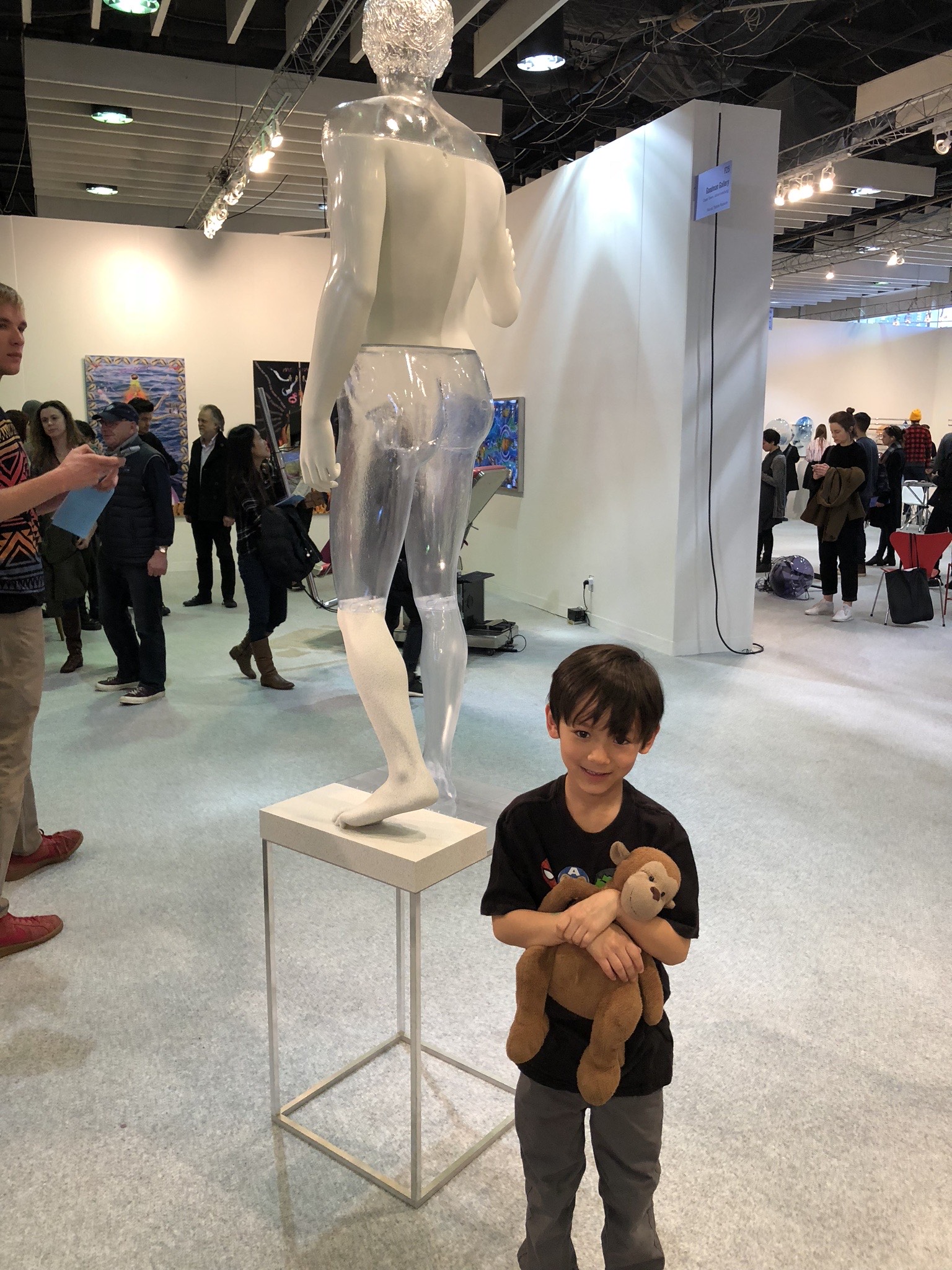 Courtesy of Dustyn Kim.
Courtesy of Dustyn Kim.
WW: What is something a mother has shared with you that’s really resonated?
DK: My own mother once said to me, “You only have one life, make sure you’re doing what makes you happy. Your happiness is the greatest gift you can give your kids.”
WW: What is the biggest misconception about motherhood?
DK: I always heard that having kids makes you become more balanced and efficient. I didn’t find that to be the case, especially in the beginning. I wasn’t magically able to balance everything. Instead, I found myself with all the same priorities and more. In trying to do it all, I found myself tired and actually less efficient. It took me a while to figure out how to prioritize my own health so I could show up 100% for work and for my family.
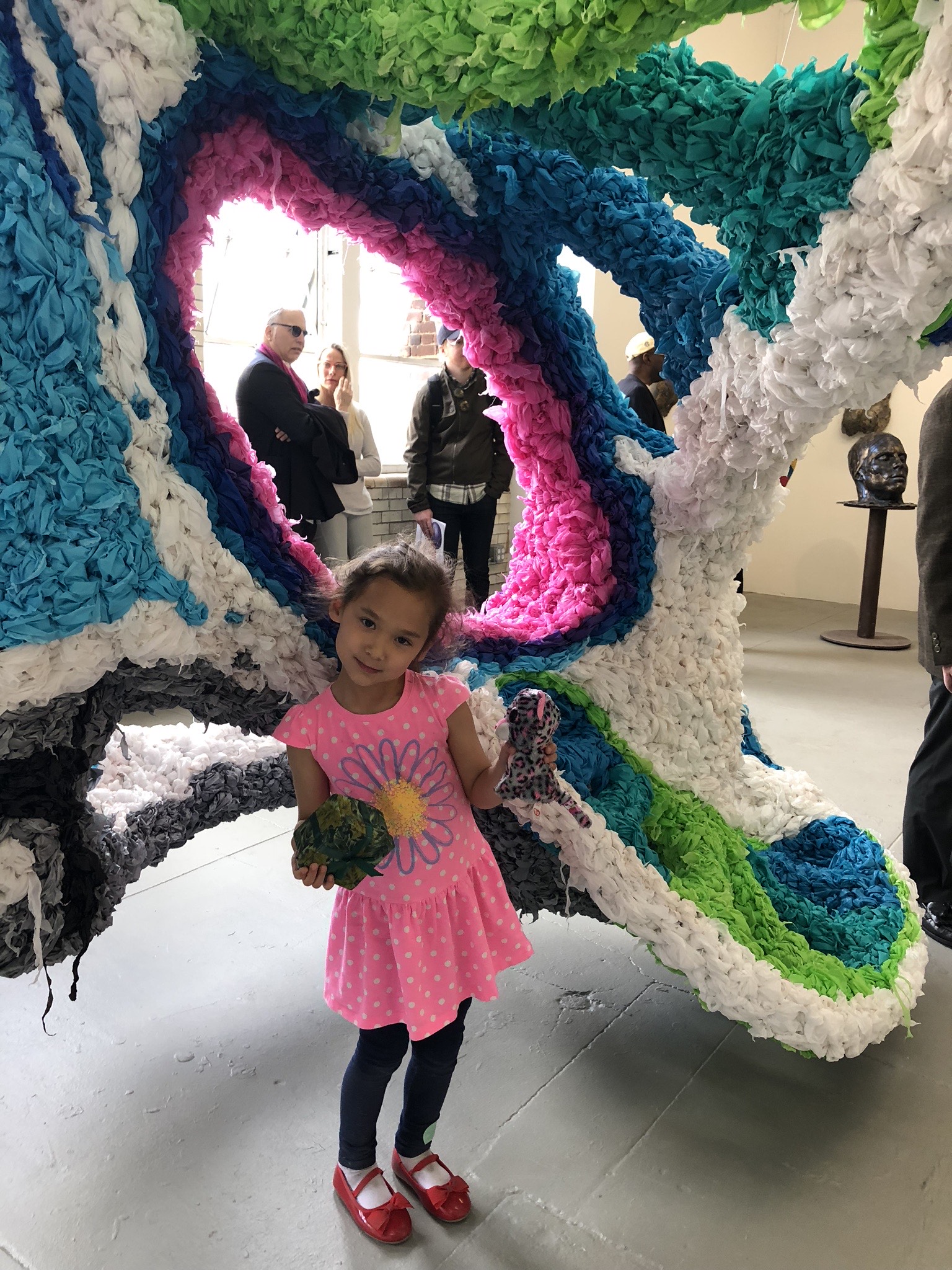 Courtesy of Dustyn Kim.
Courtesy of Dustyn Kim.
WW: What has your experience been over the past year, with so many of us trying to work while caring/helping to school our children at home?
DK: It has been both the hardest and the best year for us as a family. Having all four of us working and schooling from home tested our limits (and our patience). It was a logistical nightmare and the days felt like a never-ending test of our mental and emotional fortitude. At the same time, as a working mom, I’ve always wanted more time with the kids and am so grateful for the extra time together. Eating three meals a day together, getting to sneak in mid-day hugs, being available to help the kids with schoolwork—even the Zoom meeting interruptions—they were all precious moments that I know I’ll look back on and cherish.
WW: Last month, in celebration of women’s history month, Artsy put forth several group shows showcasing female-identifying artists. How did you want this program to address the gender parity in the art world?
DK: Women are remarkably underrepresented in the artworld, and it’s our responsibility to further advocate for these females who deserve our attention. Through our Women’s History Month programming, we’re shining a much-needed spotlight on female-identifying artists through a series of curated group shows, exclusive “First Look” collections, editorial articles, social media spotlights and more. I’m proud of the work Artsy has done and will continue to do as we work towards a more inclusive art world.
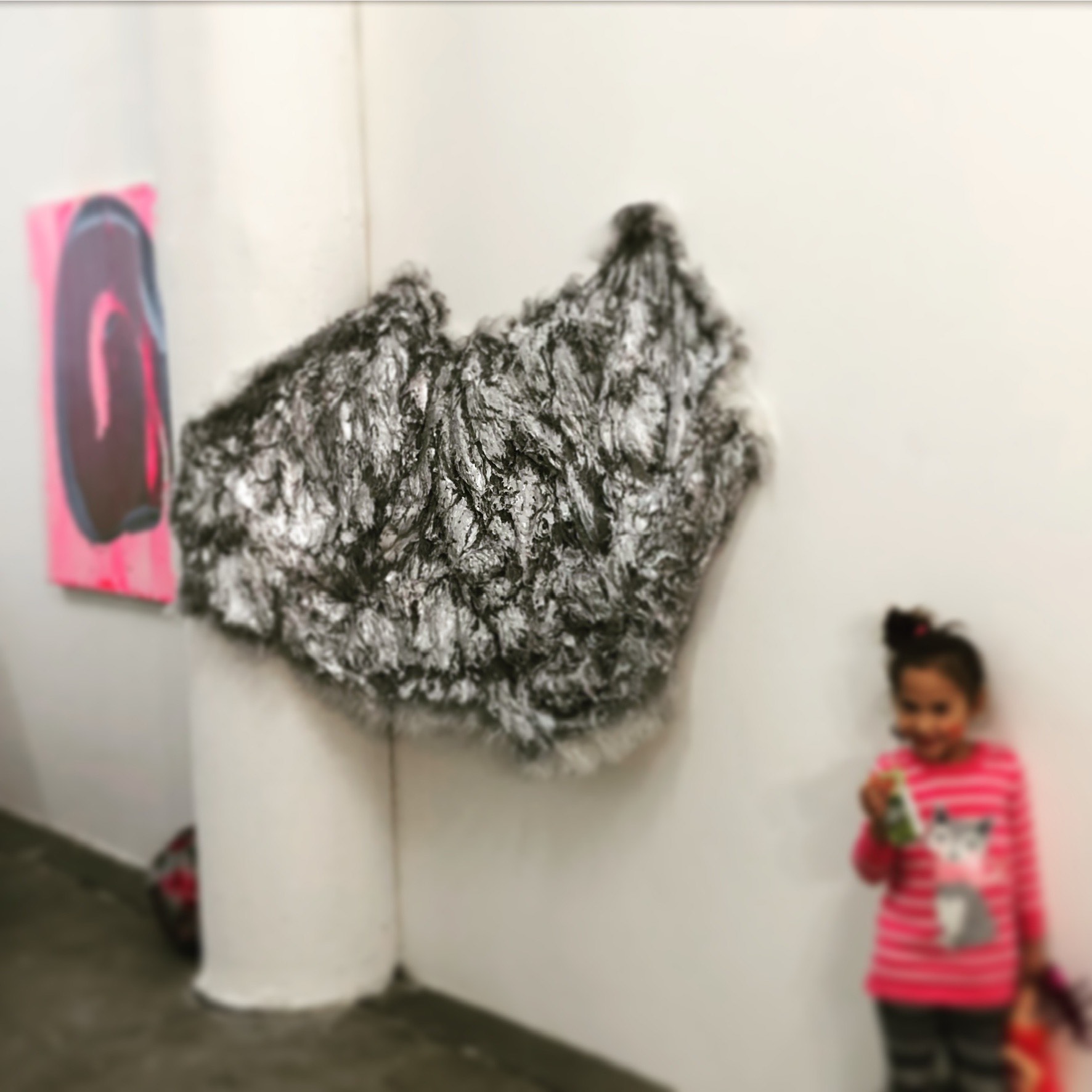 Courtesy of Dustyn Kim.
Courtesy of Dustyn Kim.






